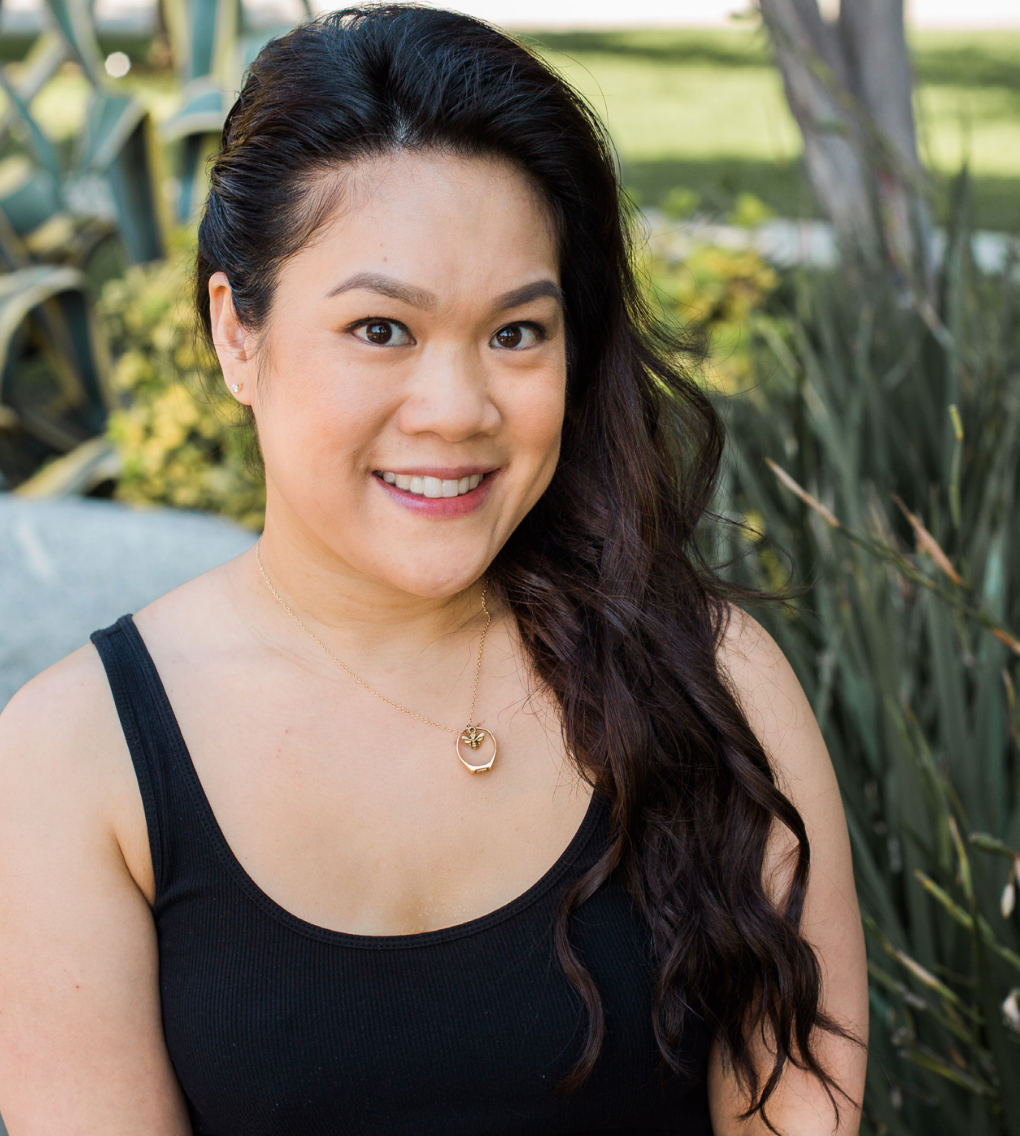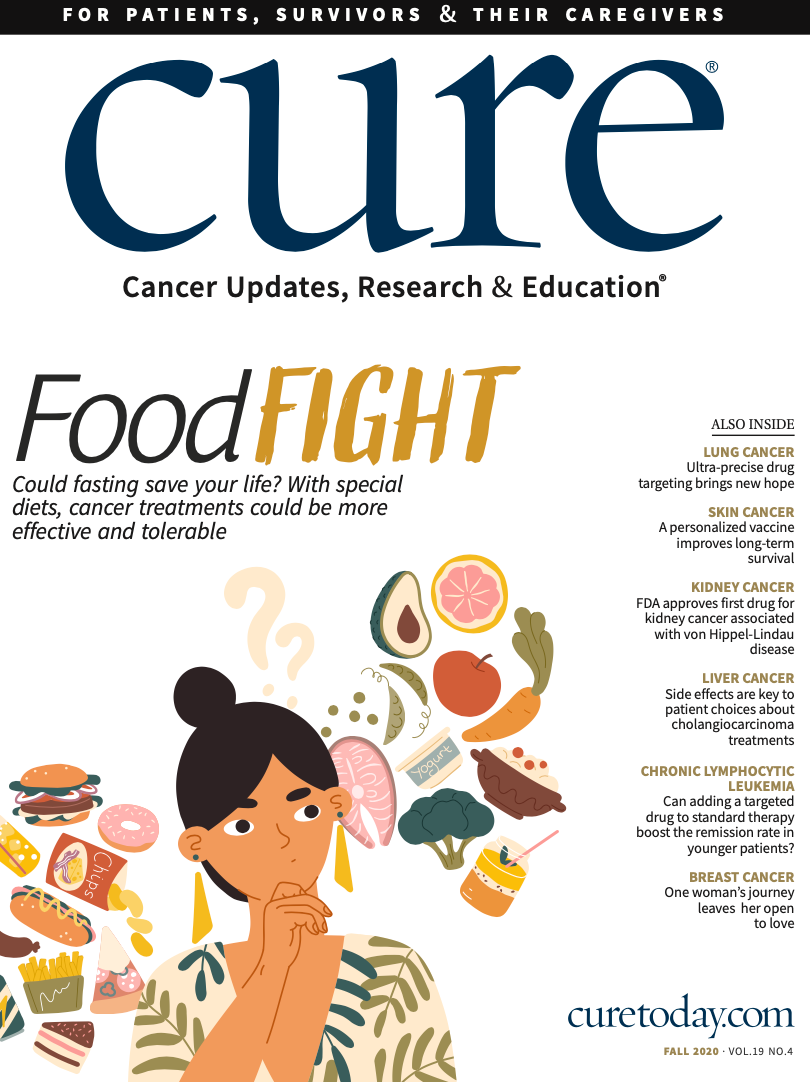Publication
Article
CURE
Early Evidence Shows Fasting, Keto Diet May Make Chemo and Some Other Cancer Treatments More Effective and Easier to Tolerate
Author(s):
Cancer loves glucose, which is why fasting, restricting calorie consumption or following the ketogenic diet may make chemotherapy and some other cancer treatments more effective and easier to tolerate, early evidence shows.
Jocelyn Aguilar felt bad enough after the first of a scheduled four rounds of chemotherapy that she thought about quitting.
She had no detectable cancer after undergoing double mastectomy for breast cancer, so the chemotherapy was an optional treatment that Aguilar, age 37 when diagnosed in October 2019, had chosen to reduce the risk of recurrence.
She ultimately decided to continue because, starting with her next round of chemotherapy, she was going to help test a counterintuitive-but-promising strategy for reducing chemotherapy’s side effects and increasing its cancer-fighting power: a very low-calorie diet designed to mimic the effects of fasting.
“On weeks (when) I was due to receive chemo that Friday, I got four boxes of food labeled Tuesday, Wednesday, Thursday and Friday. The only food I ate those days came from that day’s box. On Saturday morning, I woke up and eased myself back into normal eating,” says Aguilar, a nurse who works at the University of Southern California (USC), where the trial took place.
“The pain I experienced with that first round of chemo, before the fasting, was so terrible that I didn’t think I could go on,” says Aguilar, who described the sensation as aches and pains all over her body. “With the fast, there were still some effects, but they were not nearly as bad. It was a huge difference.”
Jocelyn Aguilar found that a fasting-mimicking diet made chemotherapy tolerable.
Jocelyn Aguilar found that a fasting-mimicking diet made chemotherapy tolerable.

Aguilar says that her food boxes each contained about 300 calories worth of plant-based food. The diet is billed by its distributor as containing “micro- and macronutrients” that are nourishing but not recognized as food by the body, which mimics fasting.
It’s hard to imagine a more counterintuitive cancer treatment than fasting — why deprive the body of vital nutrients when it would seem to need them most? — but a growing body of research suggests that fasting decreases the toxicity of cancer treatments and may increase their efficacy too.
Some evidence also shows that a ketogenic diet, which deprives the body of carbohydrates rather than all calories, may increase the efficacy of some cancer treatments. In fact, there is even some thought that the two diets may help prevent cancer, although evidence for this is currently limited.
When it comes to supplementing cancer therapies, the benefits of either dietary intervention also have yet to be definitively proven — unless you’re a mouse. “The animal data for fasting, which started in our lab but is now coming from many labs, is extraordinary. It’s hard to think of anything in the past, ever, that has done better,” says Valter Longo, who holds a doctorate in biochemistry and is the Edna M. Jones Professor of Gerontology and Biological Sciences and the director of the Longevity Institute at the USC Leonard Davis School of Gerontology.
Healthy cells and tumor cells respond differently to fasting. Healthy cells shut down their growth-promoting pathways shortly after the food stops coming in and focus on cell repair. Cancer cells, on the other hand, rarely slow their unrestrained growth enough to engage in this self-protective behavior.
Fasting thus increases the ability of healthy cells to withstand stressors such as chemotherapy or radiotherapy, but it leaves cancer cells, which suddenly have less nutritional support to sustain their rapid growth, unusually weak and vulnerable.
Fasting also depletes stored carbohydrates. Normal cells can adapt to this by running mostly on two fat-derived energy sources — fatty acids and ketones — but cancer cells are far more reliant on sugars, starches and the insulin that drives them into cells.
Most of the mouse studies to date have assessed fasting’s effect on chemotherapy or radiotherapy, but at least one study has found that a low-calorie fasting-mimicking diet (FMD) plus simple vitamin C can slow the progression of KRAS-mutated colon cancer. Another study, this one published in the prestigious journal Nature, found that both fasting and a FMD increased and extended the efficacy of the hormonal treatments tamoxifen and Faslodex (fulvestrant) in mouse models of hormone-receptor-positive breast cancer.
Making The Case For Fasting In Humans
The first clinical trial of short-term fasting in humans, which was published in 2009, reported results in 10 patients with various types of cancer. It found that fasting reduced chemotherapy-related toxicities —fatigue, weakness and gastrointestinal side effects — in the six patients who fasted 48 to 140 hours before and five to 56 hours after some (but not all) of their chemotherapy sessions.
Several other trials in humans, all of them following small patient populations for short periods of time, have also found that fasting reduced treatment-related toxicities such as fatigue or DNA damage in healthy cells.
For example, one Dutch trial assigned six patients with breast cancer to follow normal dietary guidelines and seven others to fast 24 hours before and after chemotherapy. Nonhematological toxicity did not differ between the two groups, but the researchers found evidence that fasting reduced bone marrow toxicity and reduced chemotherapy-induced DNA damage in some healthy blood cells.
Data from several of these small trials also suggested that fasting increased treatment efficacy, but none of them were large enough (or lasted long enough) to prove that fasting extended patients’ survival. There is even less evidence to support the use of fasting or the ketogenic diet in combination with immunotherapy treatments, although that remains a tantalizing possibility.
The only large trial in humans to have reported results so far was inconclusive — for a somewhat unexpected reason.
Investigators randomly assigned 131 Dutch women, all of whom were slated to receive chemotherapy for stage 2/3 HER2-negative breast cancer, either to eat according to standard guidelines or to follow the FMD. Sixty-six of the women were assigned to follow the FMD but, unfortunately, so few actually complied that it was impossible to evaluate the diet’s effects. Just 32% of women in the fasting group fasted before at least half of their chemotherapy cycles, and just 24% of them fasted before all of them.
Patient noncompliance was particularly disappointing because the FMD was designed by Longo — who has a financial interest in a company that sells FMD meal kits — as a less demanding way to get all the effects of a true, zero-calorie fast.
In spite of the challenges, several recent discoveries suggest that ketogenic diets may be particularly helpful for certain cancer treatments — helpful enough to drive funding and convince patients to follow the diet.

“It wasn’t easy,” says Aguilar, “but it was doable. I’m not normally a healthy eater, and I was being given steroids at the time, so my appetite was out of control, but I still managed it because it reduced the pain so much.”
Hopefully, patients in several other large studies, all of which are nearing their scheduled completion dates, will comply with fasting protocols well enough to help researchers determine whether short-term fasting can extend life, reduce treatment toxicity or both for patients with glioblastoma, non-small cell lung cancer, lung adenocarcinoma, ovarian cancer, breast cancer and colorectal cancer.
Positive results could change standards of care for all those tumor types within the next couple of years.
Is Fasting An Option?
For patients who can’t wait that long to select their treatment plan, the obvious question is whether they should ask their oncologists about starting now with short-term fasts or the FMD.
Some experts believe it’s too early to use fasting anywhere outside of clinical trials.
Indeed, a group of Italian clinicians recently published a letter in Nature Reviews Cancer that cautioned against what they perceive as excessive enthusiasm about fasting’s potential benefits and insufficient caution about its potential to harm some patients.
It is worrying “that the application of fasting in oncology has been prematurely reported by the media as a potential advance in medical oncology, to the point where FMD kits have recently been commercialized,” the clinicians wrote. “These may negatively interfere with cancer care, as patients at risk of malnutrition or sarcopenia (muscle loss) could autonomously decrease protein-calorie intake during treatment.”
Longo agrees that neither malnourished patients nor those who are responding to their current treatment should try fasting or the FMD outside of clinical trials. However, he believes the data from both animal models and early human trials are strong enough to make fasting an option when approved treatments stop working.
“I think (the evidence so far) is enough for an oncologist to say, ‘Look, your therapy isn’t working. I’m out of options here. This fasting-mimicking diet is so effective in mice. Why don’t we give it a shot? You have to understand there are risks, but you also have to understand that we’re out of options.’ That conversation would be appropriate now,” Longo says.
Is The Ketogenic Diet An Option?
Fasting isn’t the only way to drive blood sugar and insulin down. Patients can achieve nearly equivalent reductions by following a ketogenic diet that provides about 80% of calories from fat, 12% from protein and 8% from carbohydrates.
Low sugar consumption means low blood sugar, which, in turn, means low levels of insulin — a hormone secreted by the pancreas to drive sugar into muscles and fuel their growth and/or activity.
Healthy tissue, as mentioned before, can adapt to deriving nearly all its energy from fat, although many people feel pretty drained for a week or so at the beginning of that adjustment. (This lousy feeling is known as “keto flu.”) Many tumors, on the other hand, seem far less able to overcome their dependence on insulin and sugar (aka glucose).
“We’ve known for 100 years that cancer cells take up glucose at a much higher rate than do the normal tissues from which those cancer cells emerge,” says Lewis Cantley, who holds a doctorate in biophysical chemistry and is the Meyer Director of the Sandra and Edward Meyer Cancer Center and a professor of cancer biology in medicine at Weill Cornell Medical College.
This does not mean that patients can starve their tumors to death simply by following ketogenic diets, but it has led many researchers to speculate that adding a ketogenic diet to standard treatment protocols might increase the efficacy of many of those regimens.
It has been difficult to test this theory, however. Because no pharmaceutical company can patent a ketogenic diet, no one has a financial incentive to spend the millions of dollars that large studies cost. Instead, studies get funded through the National Institutes of Health and foundation grants. Tests of FMDs face the same issue.
The ketogenic diet also runs into the same problem that makes it hard to test fasting: patient compliance. Indeed, researchers who work for the Department of Veterans Affairs in Pittsburgh enrolled 11 patients with cancer in a 16-week trial of the ketogenic diet. Only four of them actually followed the diet all 16 weeks.
In spite of the challenges, several recent discoveries suggest that ketogenic diets may be particularly helpful for certain cancer treatments — helpful enough to drive funding and convince patients to follow the diet.
Cantley discovered a previously unknown link between sugar, insulin and cancer growth more than three decades ago: an enzyme called phosphoinositide 3-kinase (PI3K) that helps drive sugar into cells. Mutations in the genes that regulate PI3K — causing an increase in PI3K activity — are among the most common of all cancer mutations.
His discovery eventually led to the creation of PI3K- inhibiting medications, three of which have been approved for the treatment of several cancers. But all three have a big drawback.
“When you give patients a PI3 kinase inhibitor, which hits the same enzyme that propagates the insulin response, you get the unsurprising result that the patient instantly becomes insulin resistant. Many of the patients in the trials of these drugs had to drop out because of high blood sugar,” Cantley says.
Extra insulin, whether created by the body in response to rising blood sugar or deliberately injected, will solve the problem by driving the sugar into muscles, but it also drives sugar into tumors and destroys treatment efficacy.
Cantley’s team hypothesized that PI3K inhibitors would be far safer and more effective if used in combination with some tool that would control blood sugar without driving it into tissues.
They saw dramatically improved results in mice when they paired PI3K inhibitors with a class of diabetes medications called SGLT2 inhibitors, which reduce the body’s absorption of glucose via the kidneys so that excess glucose is excreted through the urine. Results were better still when they fed mice a ketogenic diet.
“Blood sugar levels hardly went up. Insulin levels hardly went up. Tumors melted away,” says Cantley, who also has a financial interest in a company that makes prepackaged meals for patients with cancer. “Every tumor we tried essentially disappeared whenever we gave a PI3 kinase inhibitor with a ketogenic diet.”
A large human trial will compare the current standard for using PI3K inhibitors against treatment plans that combine PI3K inhibitors with either SGLT2 inhibitors or a ketogenic diet. The ongoing global pandemic delayed the trial for several months, but enrollment has now begun.
And it’s not the only trial that’s testing the ketogenic diet’s effect on cancer treatments. At least 18 other such studies are either recruiting patients or preparing to do so.
“The whole thing comes down to energy. Without energy, nothing can grow,” says Thomas N. Seyfried, who holds a doctorate in genetics and biochemistry and is a biology professor at Boston College who studies how metabolic therapies such as a ketogenic diet can affect cancer and other diseases. “Tumor cells make energy by fermenting glucose and the amino acid glutamine. If we restrict the availability of glucose and glutamine, this will create tremendous metabolic stress on the tumor cells.”
For more news on cancer updates, research and education, don’t forget to subscribe to CURE®’s newsletters here.





